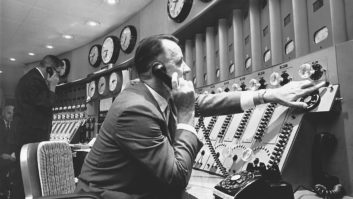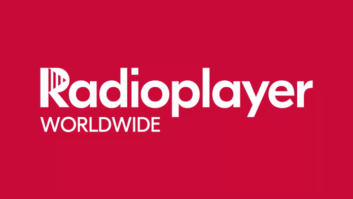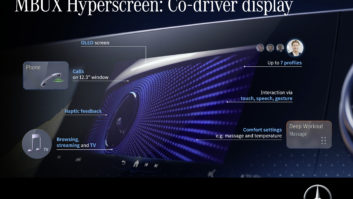XM Is Now Producing Original Programming in the Public Radio Style
Next month’s premiere of “The Bob Edwards Show” on XM Satellite Radio will mark a major milestone in the history of U.S. radio. A public-radio-style program will be produced and nationally broadcast by a commercial operator for the first time, on the 24/7 XM Public Radio channel, XM Channel 133.
This implies that the term “public radio” no longer identifies the source of the content, but that it’s now become a format label in the truest sense.
For many listeners in the United States, “public radio” has designated such a generalized programming style for some time. Although public stations here are individually licensed, operated by a patchwork of not-for-profit licensees around the country, enough commonality in their programming styles has evolved in the last quarter century that today the public radio name evokes just as concrete a descriptor of content as does “top 40” or “classic rock.”
But prior to this recent move by XM, “public radio” also meant that the content had non-profit and non-commercial origins. It remains to be seen how important a distinction this latter point is for listeners, and whether a departure from these roots will affect the reception given to what otherwise will likely be similar-sounding content.
Consider also that the RBDS system includes “Public” as one of the 32 format types in the PTY field. It’s unlikely that anyone ever envisioned a commercial operator ever using this label, but there is certainly no constraint from one doing so, just as public stations could choose to use any of the other traditional format names (such as “News” or “Classical”) at their option.
In any case, the intriguing evolution of this uniquely American style of radio has taken a distinct new turn.
Birth of a format
Various federal policies can be credited with engendering public radio, but its growth into young adulthood has been largely a private sector affair. Given that privatized, self-sufficiency of the service has become a stated federal policy goal, the development of public radio in recent years has to be seen as a great political success, and a strategic triumph for its originators.
The first step on this path was the creation of the Reserved Band (88.1-91.9 MHz), where most public radio stations exist today – although a few operate at higher frequencies (generally due to some commercial operators having ceded their FM licenses to non-profit organizations for tax benefits back when FM was still a loss leader), or on the AM band.
Today, this fortuitous arrangement allows listeners to scan this part of the FM spectrum fairly quickly to find the now-familiar sound of public radio nearly anywhere in the United States. No other radio network can claim such ease of identification by band location, giving rise to what public radio’s resident theme-music composer B.J. Leiderman refers to as “Life at the Bottom of the Dial.”
Of course, the reserved band is occupied by many different types of stations, operated by a range of licensees whose only shared attribute is their non-profit status. So this spectral neighborhood houses everything from Bible-thumping religious broadcasters to off-the-wall college stations.
Yet one group of these operators has aggregated a style that mixes classical, jazz, folk, world and other non-mainstream music styles with a particular type of talk programming to create the format now known simply as “public radio.” These operators do not share a common organizational style; they include a diverse lineup of universities, municipal agencies and community groups and generally tend toward fierce independence from one another. But these differences are transparent to the fast-growing audience for the services. Although still fairly diversified, there is an almost immediately detectable signature sound to this content package, and its popularity is now driving at least one for-profit organization to try its hand at duplicating it.
From NERN to Nipper
The other foundation for the format came from the Carnegie Commission’s 1967 “Report on the Future of Public Broadcasting,” which recommended the creation of what eventually became PBS, NPR and the Corporation for Public Broadcasting.
The latter was to serve as a private non-profit corporation for disbursement of federal funds to – and insulation from governmental control of – the two networks and their member stations. Based on the report, in 1970 Congress chartered the National Public Radio system out of what had been the National Educational Radio Network, or NERN.
This was the first radio network to consist mostly of FM stations, so audio quality standards were high from the start, along with production values and journalistic integrity. (The relatively few AM stations in the network came about via legacy university licenses or via recent acquisitions, and are now almost always second services attached to a primary FM station or regional network.) Although NPR’s original interconnection system was via 5 kHz land lines, these lines were used primarily for news and public affairs content, with music programs generally distributed via reels of tape sent through the mail. In the 1980s, NPR was the first U.S. radio network to move to satellite distribution, whereby all programming could be distributed at 15 kHz bandwidth, and in stereo where needed.
Around this time, the public radio system experienced strong growth and diversification, and notwithstanding occasional government attempts over the years to eliminate federal funding, that growth continues. Funding now comes from a variety of federal, state and private sources, as well as direct listener contributions and corporate underwriting via purchased on-air sponsorship announcements. This financing scheme is unique among public broadcasting worldwide, and also contributes something to the signature sound of U.S. public radio.
NPR is now only one of three major content distributors for public radio, and many local stations continue to create substantial amounts of unique local content. Throughout this expansion and continuing change, the public radio content style has remained fairly constant, and is generally recognizable to any radio listener. Even though the actual content broadcast varies, the overall character of the service has created a distinctive “public radio” brand that distinguishes it from any other U.S. or international radio format.
Low-hanging fruit
It makes sense for satellite radio to adopt the public radio brand into its menu of formats.
Consider that it is the only form of U.S. terrestrial radio (other than religious broadcasting) that has attempted to collect funding from listeners, and it has been relatively successful in doing so. Although research shows that only about one listener in 10 actually contributes, several major market stations each routinely raise millions of dollars per year from listeners, and such funding represents a substantial portion of all public stations’ revenue streams. It also continues to rise every year.
So at least some of public radio’s audience has already moved beyond the behavioral issue of paying a broadcaster directly for non-commercial radio service, which is perhaps the largest obstacle to growth of satellite radio. Moving to a multi-channel subscription model for such audiences is an easy step, so it makes sense for satellite radio services to invest in a format that has clearly exhibited its ability to stimulate such unusual listener behavior.
This was behind Sirius Satellite Radio’s inclusion of several public radio channels in its initial offerings, and XM is now following suit. Yet XM’s approach is more proactive, in that it will create a mix of content lifted from existing public radio operators with content it will create on its own. While “The Bob Edwards Show” is the only example of the latter at this writing, if it proves successful more could follow.
The fact that XM’s studios are mere blocks from NPR’s headquarters in Washington makes this migration even easier to imagine. XM is the first to cross a line often contemplated with trepidation by public broadcasters, and it may now be embarking on a path that continues to poach staff – and listeners – from the traditional public radio system.
Just as public radio has initiated technologies that the commercial radio industry has later adopted as standard practice, it now may have similarly launched its content brand into the commercial environment. Of course, success always breeds competition, and imitation is the sincerest form of flattery; but such platitudes are likely of little comfort to public radio broadcasters, who will no doubt observe how “The Bob Edwards Show” fares with rapt attention.












